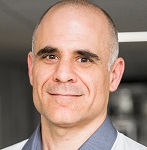The combination of an aging population and gains in longevity increases the significance and societal burden of osteoarthritis (OA). Bioclinica has worked actively in the application of imaging for OA clinical trials for more than 20 years, but a safe and effective disease-modifying therapy remains elusive. Nevertheless, interest in this disease remains high and pharmaceutical and biotech companies continue to discover and test new candidate therapies in hopes of solving this unmet medical need.
While a regulatory approval has not been achieved, advances in trial design and methods of evaluating biomarkers of interest have occurred, providing new confidence in running effective and efficient trials. One of the first challenges in designing an OA trial is selecting the right patient population to study. Clear clinical and imaging criteria have been established to diagnose the patient suffering from osteoarthritis. However, a successful trial will depend on more than that. Based on the candidate drug’s therapeutic target and method of action, the study population must also meet the endotype/phenotype requirements to maximize the chance to see a therapeutic effect. In addition, given the slowly evolving nature of this disease, careful subject selection can help shorten trial duration facilitating go/no-go and dose selection decisions.
It is now standard to use both radiography and MRI to select study participants who meet the baseline characteristics required by the trial design while excluding subjects with confounding conditions and other pathology. Moreover, imaging is shown to be useful for identifying an enriched cohort with increased risk of progression (e.g. radiographic joint space narrowing or cartilage loss).
Register for this webinar to explore the role of imaging in determining subject eligibility in OA trials. Topics to be covered will include:
- The complementary roles of radiography and MRI for subject selection and when to use each
- Specific selection criteria to target the right OA patients
- Workflow strategies for efficient screening
- The current status of prognostic imaging biomarkers for disease progression
Speakers

Thomas Fuerst, PhD, Chief Science Officer, Bioclinica, Inc.
Dr. Thomas Fuerst leads the design and scientific oversight of musculoskeletal clinical trials for Bioclinica. Dr. Fuerst received his Ph.D. in medical physics from the University of Wisconsin at Madison and has more than 25 years of clinical trial experience in musculoskeletal, immunology and inflammation, metabolic disorders, women’s health and rare diseases. Prior to joining Bioclinica, he was a faculty member of the University of California, San Francisco, where he served as Associate Director of the Osteoporosis and Arthritis Research Group (OARG). Dr. Fuerst is also a co-founder of the imaging core lab Synarc, where he served as Scientific Director before its merger with Bioclinica in 2014.

Frank Roemer, MD, Professor of Radiology, University of Erlangen; Chief Medical Officer & Director of Research, Boston Imaging Core Lab
Dr. Frank Roemer is a German board-certified musculoskeletal radiologist with a strong focus on MRI. He is Professor of Radiology at the Friedrich-Alexander University of Erlangen-Nürnberg, Adjunct Professor of Radiology at Boston University School of Medicine and attending radiologist and Chief of Musculoskeletal Radiology at the Department of Radiology at the Universitätsklinikum Erlangen, Germany. He is CMO and Director of Research at Boston Imaging Core Lab (BICL), LLC., a company providing image assessment services with a focus on osteoarthritis.
Dr. Roemer has long-standing experience in semiquantitative scoring and quantitative assessment of osteoarthritis, rheumatoid arthritis, fracture healing and osteoporosis. He is first author of the only whole organ scoring system on hip osteoarthritis – HOAMS, and senior author of the most commonly used semiquantitative scoring system for knee osteoarthritis – MOAKS. He introduced ROAMES, an instrument enabling MRI for screening in clinical DMOAD trials. For several years, he has been one of the main radiological analysts for several large NIH funded osteoarthritis studies including the Osteoarthritis Initiative (OAI), the Framingham Osteoarthritis study, MOST and other large NIH-funded studies, as well as pharmaceutical-sponsored clinical trials.
Dr. Roemer is an internationally recognized clinician-scientist and has authored >370 scientific publications. His research interests include imaging of musculoskeletal diseases, with a focus on MRI and osteoarthritis, and imaging in sports medicine. He is Associate Editor for Imaging of “Osteoarthritis & Cartilage” since 2011 and serves on the Editorial Boards of several leading journals including European Radiology. Recently he has been appointed Editor-in-Chief of the journal Osteoarthritis Imaging
Who Should Attend?
- Medical monitors, clinical scientists and trial managers designing and running OA clinical trials
- Biostatisticians responsible for analysis of OA imaging data
- Academic researchers in OA
What You Will Learn
In this webinar, participants will learn about:
- The complementary roles of radiography and MRI for subject selection and when to use each
- Specific selection criteria to target the right OA patients
- Workflow strategies for efficient screening
- The current status of prognostic imaging biomarkers for disease progression
Xtalks Partner
Bioclinica
Bioclinica, an ERT company, is an integrated clinical life science solutions provider, leveraging knowledge and insight to minimize risk and accelerate development in clinical trials. Through deep medical, scientific, and technology expertise, the company provides medical imaging and cardiac safety services, clinical endpoint adjudication, clinical trial software, and drug safety solutions. For more information, visit www.bioclinica.com.
You Must Login To Register for this Free Webinar
Already have an account? LOGIN HERE. If you don’t have an account you need to create a free account.
Create Account



